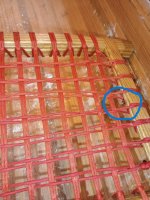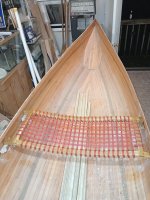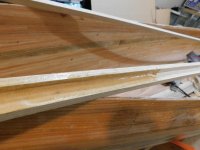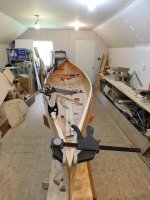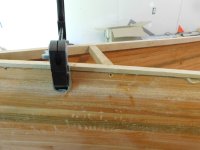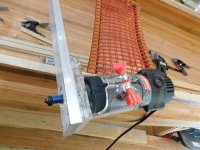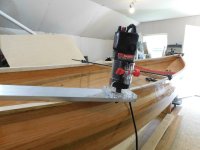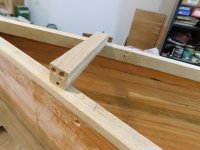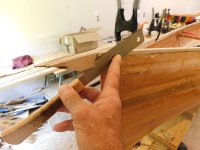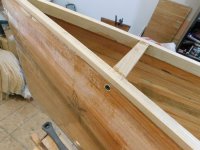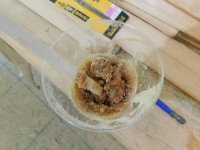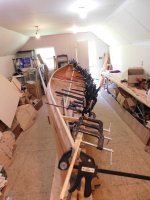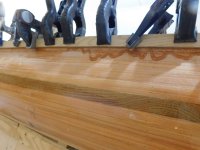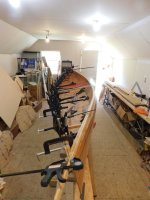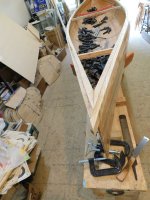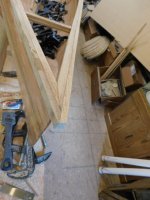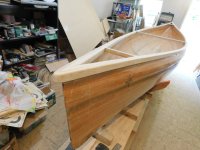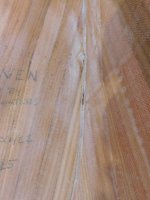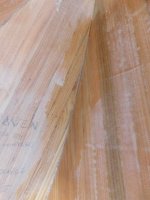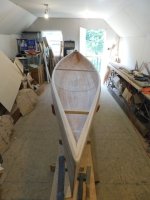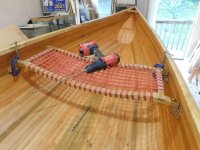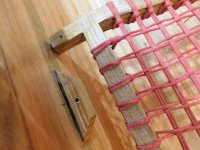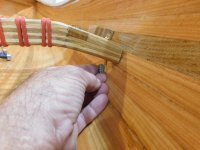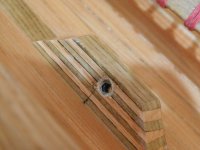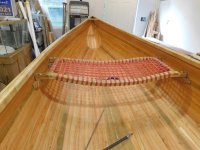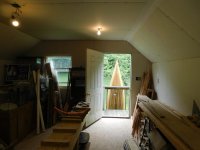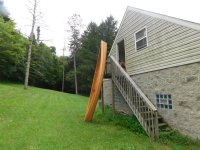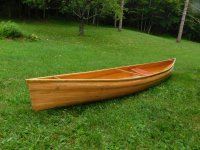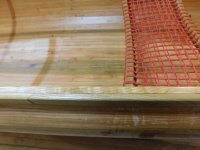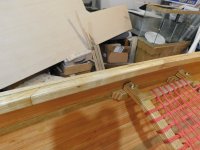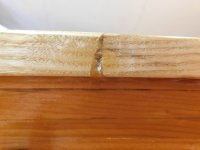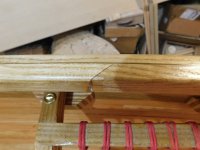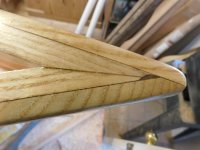I have noticed that and I've wondered about it. I really enjoy building these and I'm hoping that at least some of the viewers are reading with intent to start a build of their own. If that is the case, they are, hopefully, aware that the members of this forum are extremely willing and able to help (and don't get terribly offended when we won't always agree with, or listen to, the advice given).
Regarding that, I've been re-reading Brian's explanation in post #140.- I'm wondering if I should be building the seats differently and I'm tempted to make a half dozen each way and break them except for one little issue: A fair test would include webbing the seats completely and that takes a few hours the way that I do it. (I guess I could wrap & staple webbing and even build them entirely from Aspen or Pine if the aim was to merely test the joint failure...)
Oh well, that's (maybe) for another day...
I rounded the edges of the seat frame by wrapping sandpaper around them and using it like a shoe shine rag. My understanding is that a radius is stronger than a sharp edge and, while I don't understand the physics of that (in all honesty, I've never bothered to try), I can just go along with the idea as it's more comfortable anyway.
After that, I put small pencil marks every inch from center on all 4 pieces and varnished the frame. When dry, I started wrapping and weaving the current seat using 5/32 inch paracord (I found a roll of dark red and thought it would complement the colors of the Larch & Sassafras really well). Doing it this way eliminates drilling the seat frame but, as mentioned above, it takes hours.
View attachment 146824
It's also hard on the hands pulling that skinny cord tight but it does make for an attractive (IMO) and comfy seat.
Now: not to discourage any would-be builders but mistakes are made. I believe that all can be remedied but some take more work than others and, in keeping with my "learn from my mistakes" demeanor, I'll share my latest.
Over the course of the past 2 days, I've got a total of about 3 hours weaving this seat. I had a 100 foot roll of paracord and I didn't use anywhere near that on my Freedom seat. This one, however, has almost 3 times the seating area so, much to my dismay, 100 feet was insufficient the way that I'm webbing it.
View attachment 146825
My options, as I see them: find more red paracord and attempt to hide the knot on the bottom of the web where I won't sit on it (I think I can hide it under the spreader bar) or take it all apart, remark the seat frame with 1 1/4 or 1 1/2 inch spacing and see if 100 feet is sufficient to get coverage with that spacing (pretty sure that it will be).
As mistakes go, this one is relatively minor and the corrective action required is pretty straight forward: "You didn't do it right so try again". Taking it apart will probably take a couple of hours so I'll be searching for red paracord during my travels tomorrow.
RE: testing the seats
If your goal was to test the joint, I don't think you would need to do the webbing, I agree that for a full blown comparison, that would be the ideal ... but the thought here was that the joint construction itself causes a weakness. What isn't clear is whether that weakness is enough to cause failures or if it impacts total strength in any meaning way.
I suspect that could be determined just using a constructed joint, i.e. just one half the seat ... the long member, with 2 completed dado joints. That would simplify the test and reduce the work required to your scratch your curiosity ( and mine/ours)
Brian

